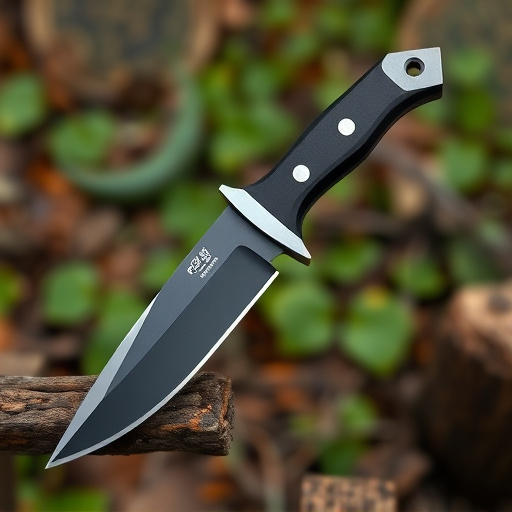Fixed blade self-defense knives are robust, durable tools ideal for close-quarters combat, personal protection, and outdoor adventures. Key considerations include edge shape, hardness, size, weight balance, handle material, and understanding local laws to ensure safe and responsible carry practices. These knives offer superior edge retention, minimal malfunction risk, and versatility in critical situations.
“Uncover the power of self-defense with a fixed blade knife—a versatile tool designed for protection. This comprehensive guide explores the unique advantages and design considerations of these powerful knives, empowering individuals to make informed choices. From understanding their distinct features to navigating legalities, we delve into what makes a fixed blade self-defense knife an effective personal safety companion. Discover key traits to look for, ensuring you’re prepared and confident in any situation.”
Understanding Fixed Blade Self-Defense Knives: Their Design and Advantages
Fixed blade self-defense knives are designed with a single, unyielding blade that extends from the handle, offering several advantages in close-quarters combat. Unlike their folding counterparts, these knives boast a robust construction, making them ideal for intense situations where reliability and strength are paramount. The fixed blade design provides exceptional control and precision during strikes, allowing users to deliver powerful, accurate cuts with ease.
These knives are often crafted from high-quality steels, ensuring superior edge retention and durability. Their simplicity in mechanism translates to fewer moving parts, reducing the risk of malfunction when every second counts. Whether for personal protection or outdoor adventures, a fixed blade self-defense knife serves as a reliable tool, offering both defensive capabilities and versatility in various situations.
Choosing the Right Fixed Blade Knife for Personal Protection: Key Features to Consider
When selecting a fixed blade self-defense knife, several key features should guide your choice. Firstly, consider the knife’s edge shape and hardness; a sharp, durable edge is essential for effective cutting and defense. Serrated edges excel at penetration but may not be suitable for close-quarters combat, while straight edges offer versatility. Edge hardness, measured on the Rockwell scale, impacts sharpness and longevity; higher ratings (e.g., 58-60 HR) indicate better durability.
Size and weight also play significant roles. A balanced knife that fits comfortably in your hand ensures precise control during use. Longer blades provide more reach but may hinder maneuverability, while shorter blades offer quicker draws but reduced cutting power. Additionally, consider the handle material for grip, comfort, and impact resistance. Textured handles enhance traction, even when wet or slick with blood, ensuring a secure grasp during critical moments.
Legal and Safety Aspects of Carrying a Fixed Blade Self-Defense Knife
Carrying a fixed blade self-defense knife comes with a range of legal and safety considerations. Legally, regulations vary significantly depending on your location. Some regions have strict restrictions on who can own and carry such knives, while others may allow it with certain permits or under specific circumstances. It’s crucial to research and understand the local laws to avoid legal repercussions.
Safety is paramount when considering a fixed blade self-defense knife. Proper training and experience are essential for safe handling and use. Always store your knife securely and ensure you’re familiar with its lock mechanisms to prevent accidental injuries. Additionally, being mindful of your surroundings and following responsible carry practices can help ensure the safety of yourself and those around you.
